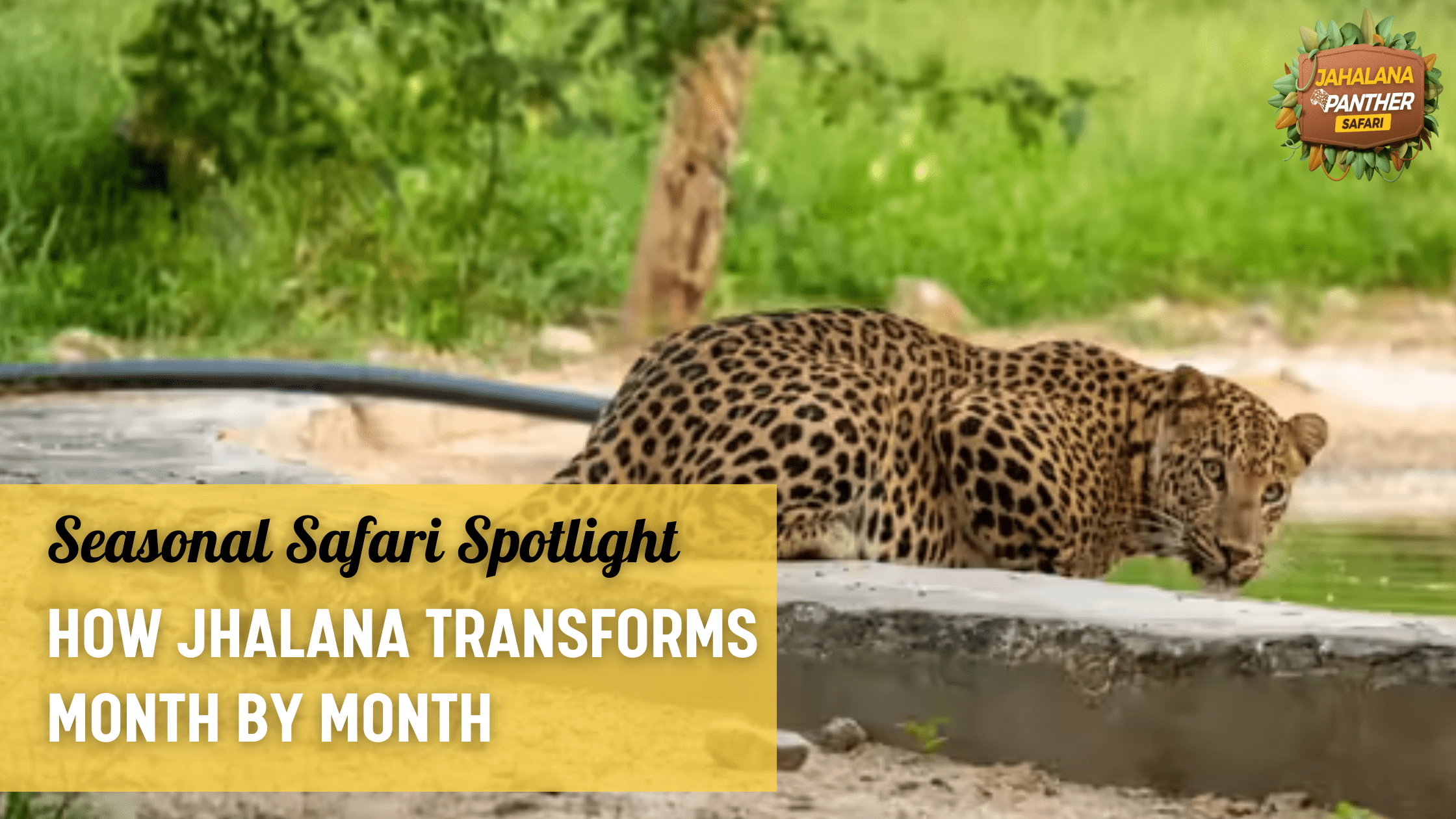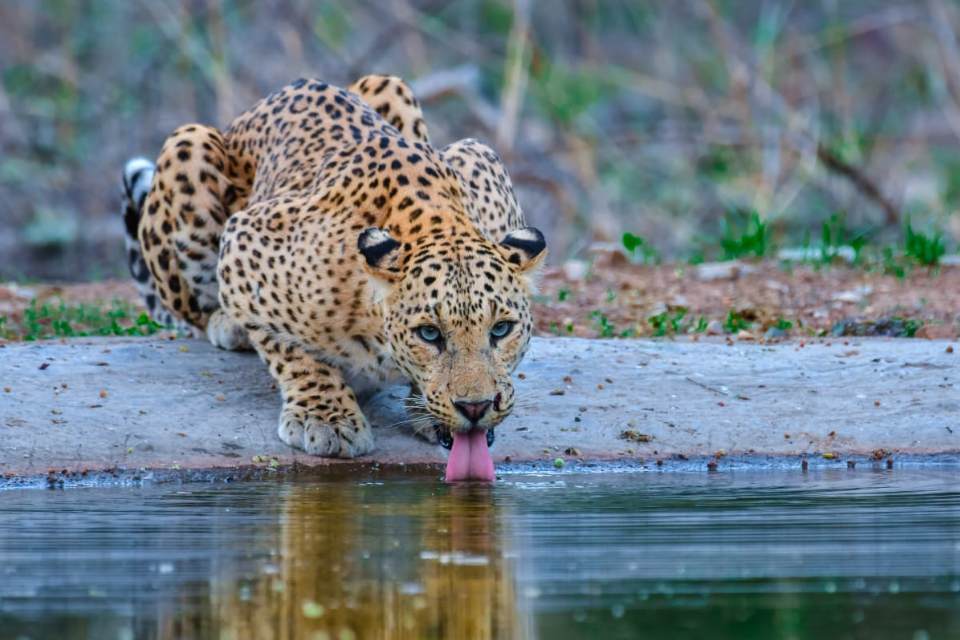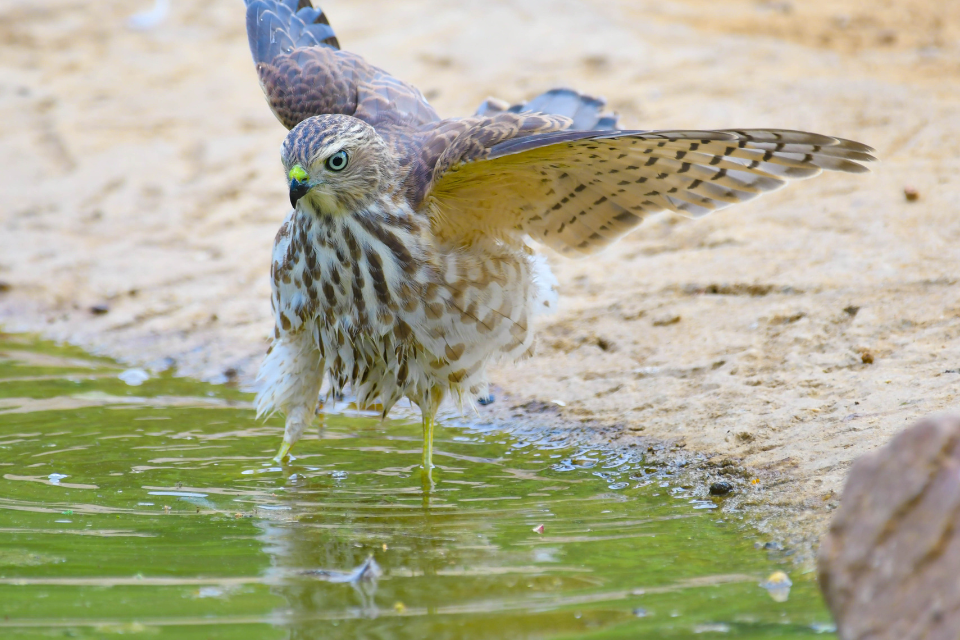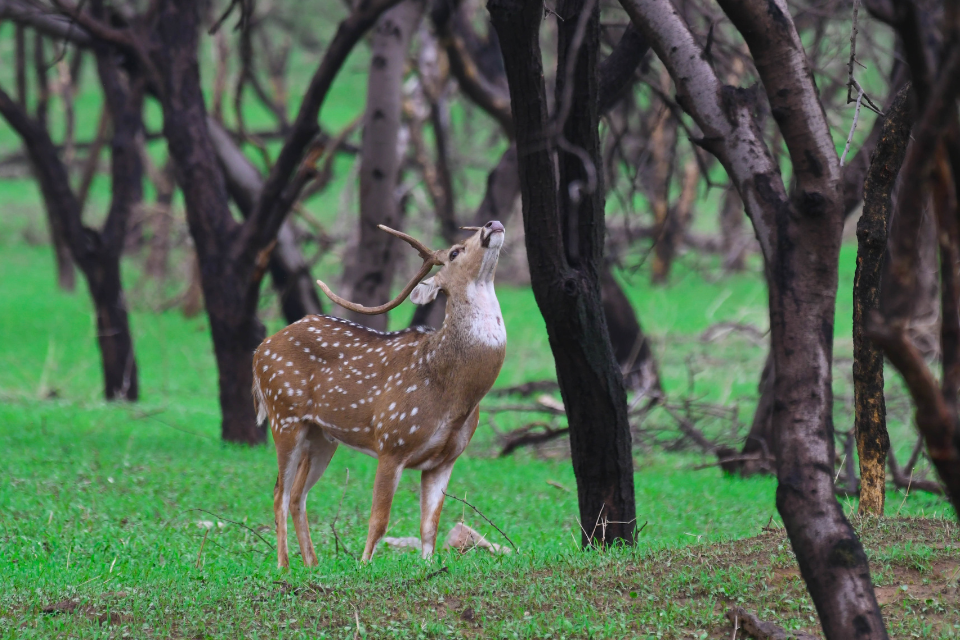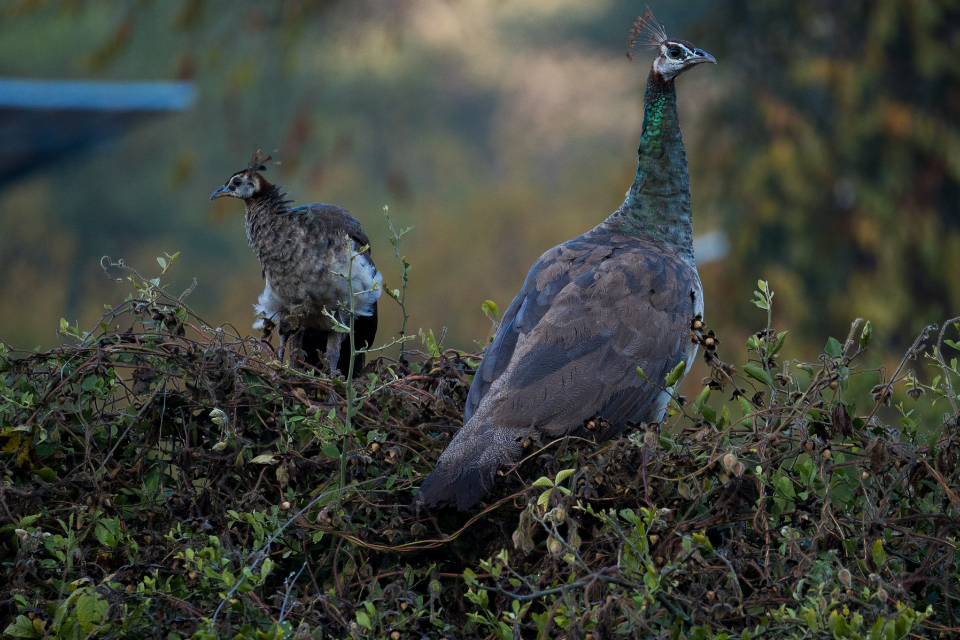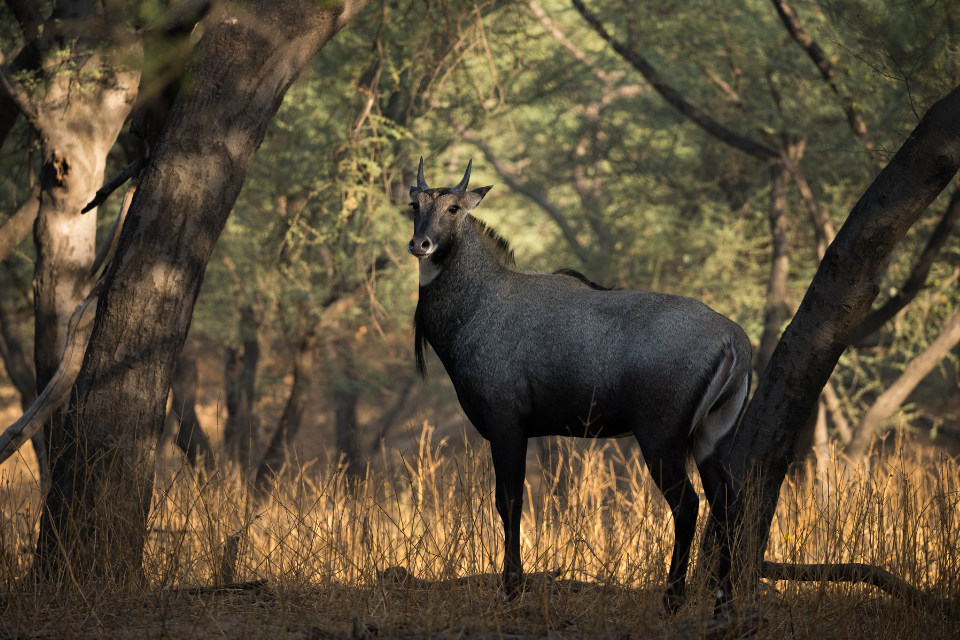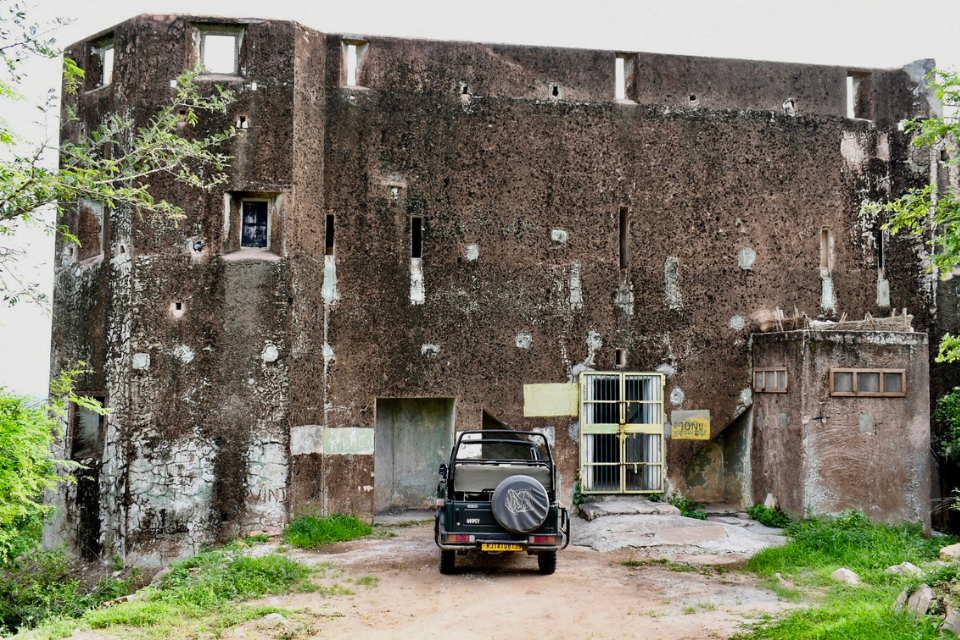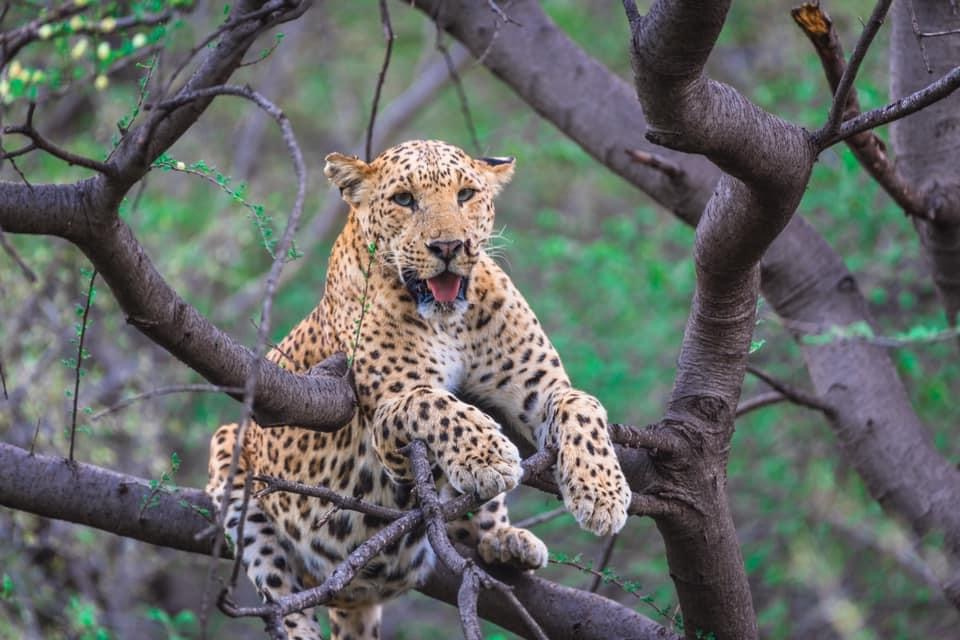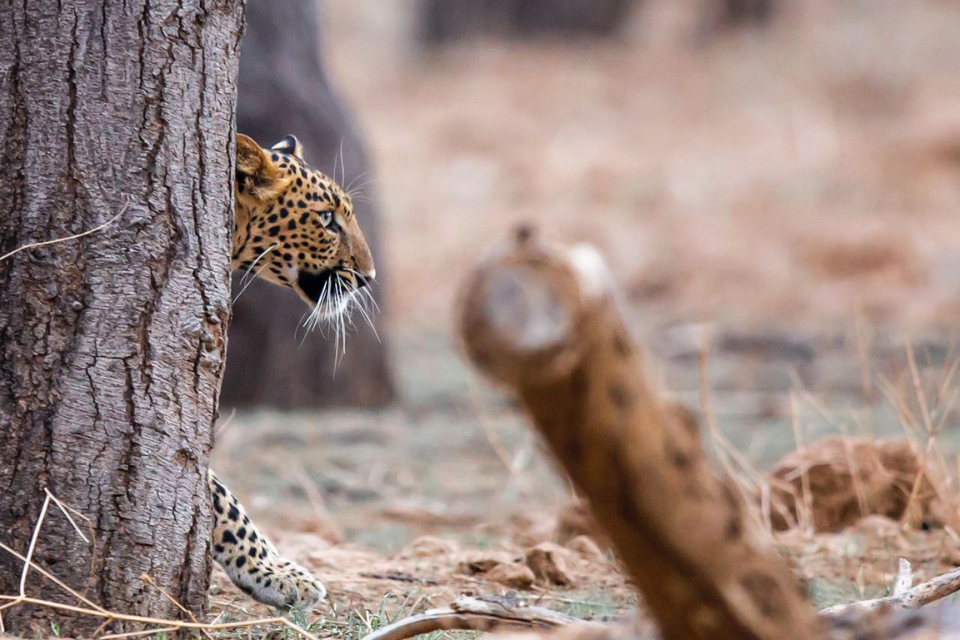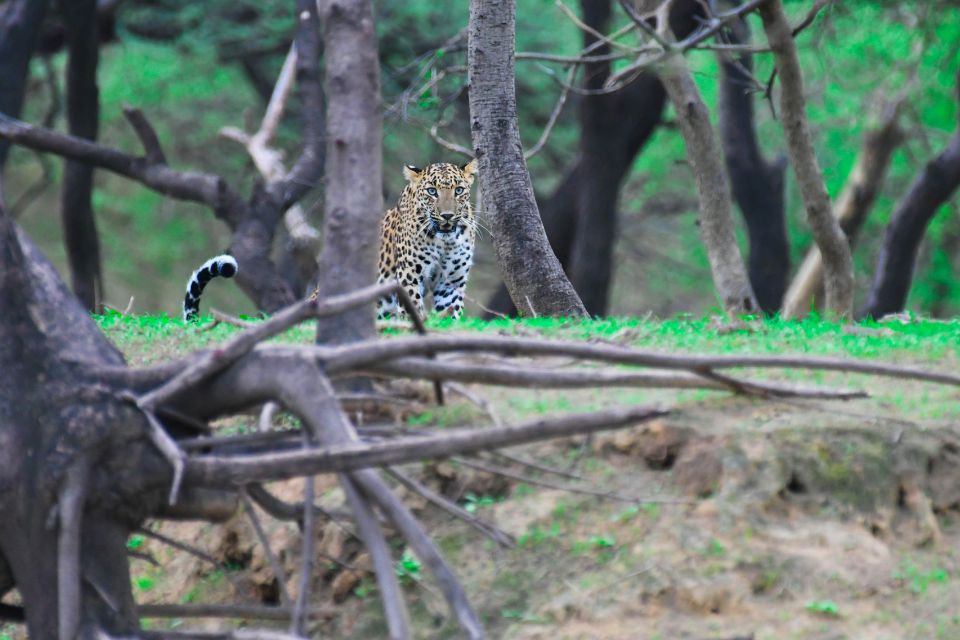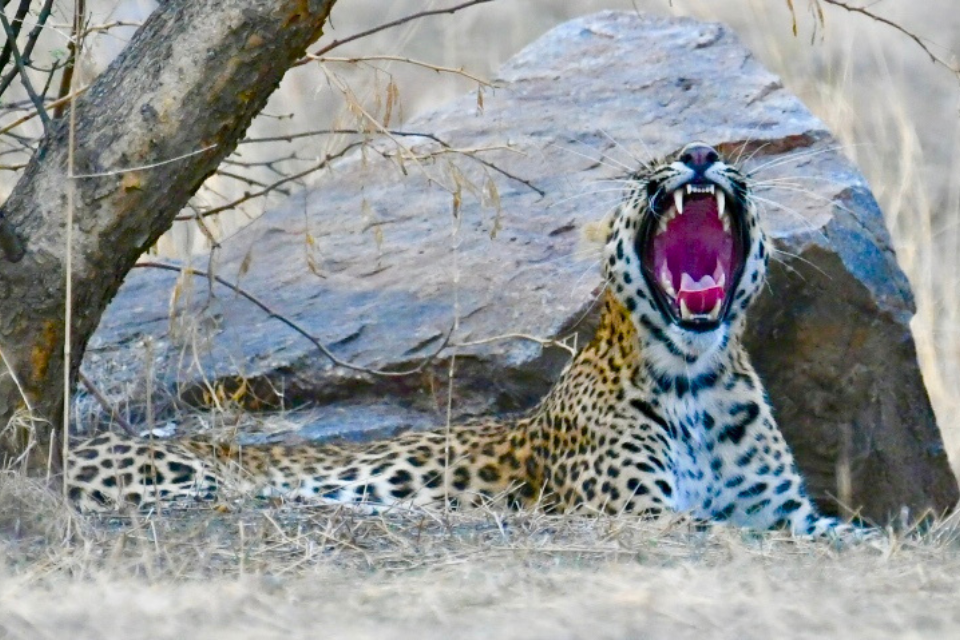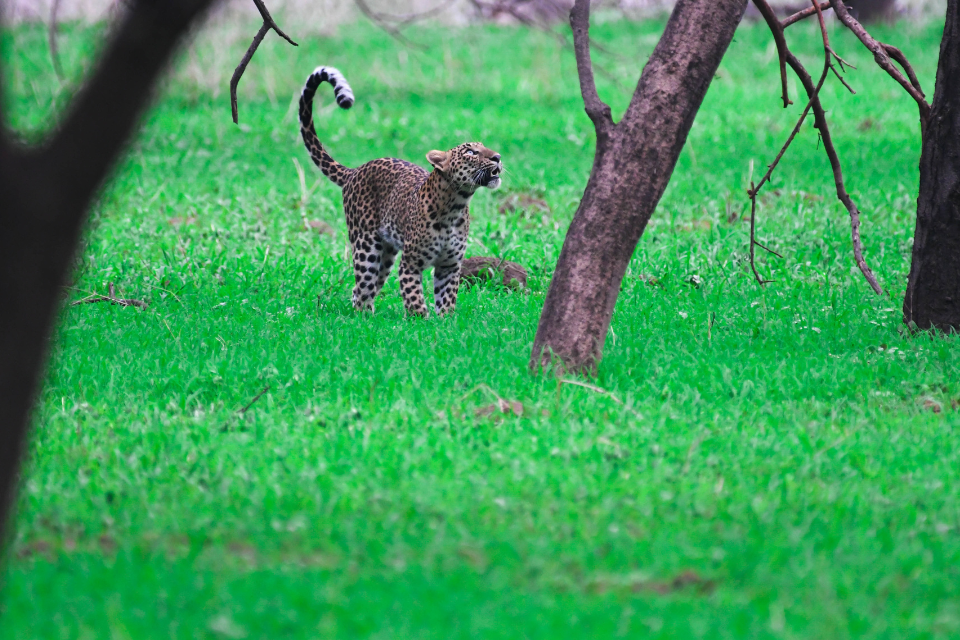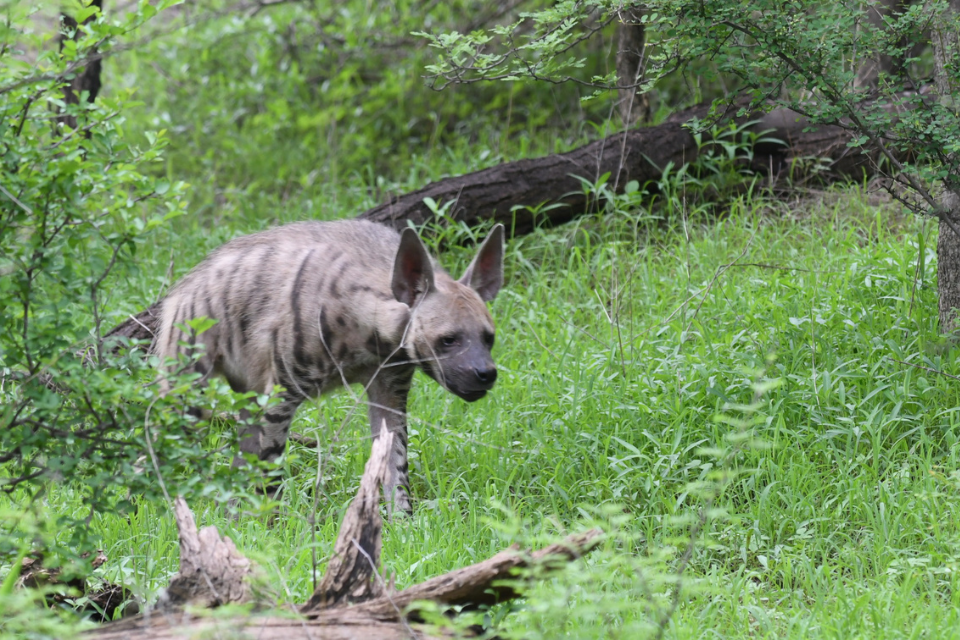- September 24, 2025
Seasonal Safari Spotlight: How Jhalana Transforms Month by Month
Why Jhalana Belongs on Your Wildlife Bucket List
If you’ve ever dreamed of seeing leopards against a backdrop of Aravalli hills, Jhalana Leopard Safari is your kind of wild. Spread across scrub forests and rocky outcrops on Jaipur’s edge, this urban wilderness punches far above its size with surprisingly reliable leopard activity, rich birdlife, and a cast of supporting characters—hyenas, jackals, desert foxes, nilgai, and peacocks that seem to know exactly where the camera is. What makes Jhalana truly special, though, is how dramatically it changes month by month. One visit isn’t like the next: post-monsoon the forest glows green; winter pulls in migratory birds; summer bakes the landscape into tawny minimalism that’s perfect for big-cat photography.
This month-by-month guide shows you what to expect in each window—weather, visibility, birdlife, track conditions, and how to tune your plan for families, photographers, or first-timers.
The Short Course: How Seasons Change Sightings
- Post-monsoon (Sep–Nov): Fresh foliage, water puddles, vibrant insect and bird activity. Sightings can be more serendipitous thanks to prey movements, but the thicker vegetation may require extra patience for clean frames.
- Winter (Dec–Feb): Crisp air, migratory birds, and golden light. Morning mist is common, which is gorgeous for silhouettes but can soften distant subjects.
- Pre-summer (Mar–Apr): Vegetation thins; visibility improves. Good balance of comfort and clarity.
- Peak summer (May–Jun): Harsh heat compresses animal movement to water points and shade, often improving predictability for leopards but testing your stamina.
- Monsoon (Jul–Aug): Restricted or rain-dependent tracks in places; the forest revives. Fewer crowds, a painterly mood, and dramatic skies.
March: Thinning Greens, Rising Clarity
- Landscape: Foliage begins to thin; sightlines improve through the scrub.
- Wildlife behavior: Temperature nudges predators to move early/late; mid-day siestas deepen.
- Birdlife: Migrants begin to taper, but still lively at water.
- Photography notes: Contrast rises; polarizer helps with glare on rock faces.
- Comfort: Light cotton layers; dust masks help on breezy days.
April: The Big-Cat Sweet Spot
- Landscape: Sparse leaves, clean views of ridges and termite mounds.
- Wildlife behavior: Leopards often use predictable paths to water or shade—prime time for patient staking.
- Birdlife: Fewer migrants, but resident peafowl, parakeets, and drongos perform like regulars.
- Photography notes: Classic Jhalana frames—leopards on rocks, high-contrast stripes of light and shadow.
- Tip: Book the first safari of the day; heat is rising, but not punishing yet.
May: The Heat Is On (and So Are Sightings)
- Landscape: Stark, sunburnt palettes—beige, gold, and slate. Waterholes become central.
- Wildlife behavior: Animals cluster near water in predictable windows; leopard sightings can be excellent for those willing to brave the heat.
- Birdlife: Water points turn into bird bars—bee-eaters, kingfishers, and doves rotate through.
- Photography notes: Harsh midday light; prioritize early AM and late PM. Short bursts, long lenses, stay hydrated.
- Health: Electrolytes and SPF are non-negotiable.
June: Searing Days, Electric Skies
- Landscape: Pre-monsoon cumulus drama. Dust devils some afternoons.
- Wildlife behavior: Similar to May—waterwise movement. Occasional pre-monsoon storms cool the evening and trigger activity spurts.
- Birdlife: More vocal residents; cuckoos call ahead of rains.
Photography notes: Watch for storm light—golden foreground with graphite clouds makes extraordinary frames.
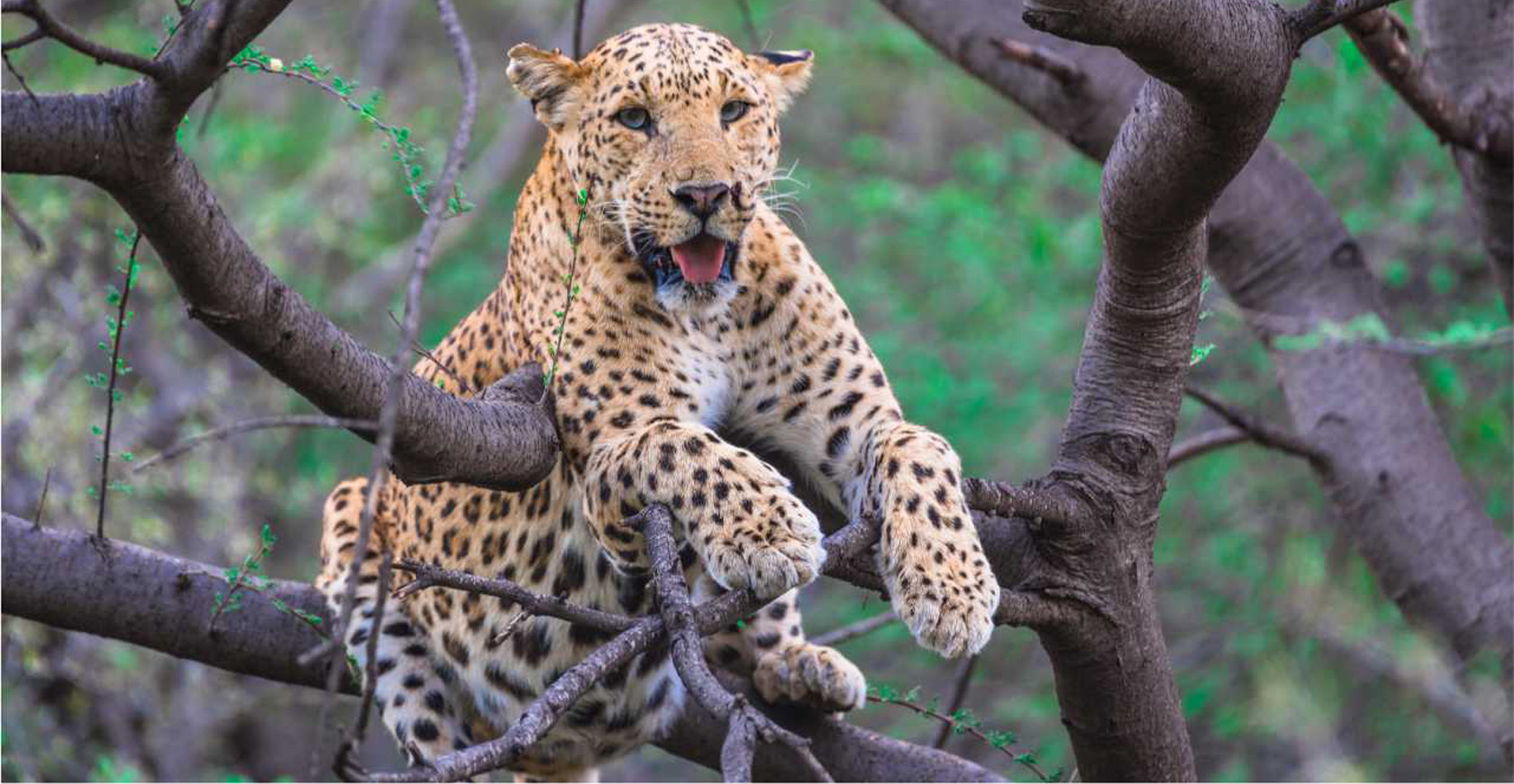
July: First Rains, Forest Reset
- Landscape: The first showers quicken the greens. Track conditions vary; some puddles, mildly slippery sections.
- Wildlife behavior: Fresh scents reset territories; leopards reinvestigate paths. Insects (and thus prey) increase.
- Birdlife: Frogs and insects surge; bee-eaters and drongos hawk the air.
- Photography notes: Overcast means softer dynamic range. Keep a rain cover for gear and a microfiber cloth.
August: Lush, Low Light, High Mood
- Landscape: At peak lushness—ferns, grasses, and wildflowers on the margins.
- Wildlife behavior: Cats move quietly through tall green, so track craft and guide skill matter.
- Birdlife: Butterflies and small insectivores everywhere; peacocks dance post-showers.
- Photography notes: Embrace moody frames—use wider lenses to tell a habitat story when cats are coy.
September: Green Glory Meets Open Windows
- Landscape: Still green, but visibility improves as grass settles.
- Wildlife behavior: Post-monsoon energy—predators trail prey along refreshed paths.
- Birdlife: Early migrants begin to trickle; roller sightings perk up on wires near boundaries.
- Photography notes: Great habitat + subject balance. Try environmental portraits of leopards within green arcs of the Aravallis.
October: Comfort, Color, Consistency
- Landscape: Fresh greens, comfortable temps, clearing skies.
- Wildlife behavior: Stable routines—reliable morning/evening walks to known shade clusters.
- Birdlife: Migration builds; raptors cruise thermals.
- Photography notes: Saturated colors without monsoon gloom; arguably a top month for first-timers.
November: Golden Season
- Landscape: Leaves mellow to olive and gold; dust is low, light is rich.
- Wildlife behavior: Excellent daybreak movement; leopards on rock perches = high probability moments.
- Birdlife: Migrants arrive in numbers; waders appear at nearby wetlands (pair your trip with a birding detour).
- Photography notes: Dreamy light for fur detail and catchlights—pack your fast telephoto.
December: Calm, Cold, and Photogenic
- Landscape: Cold mornings, clear afternoons; sometimes cottony fog in gullies.
- Wildlife behavior: Predictable movement windows; hyenas vocal at dawn/dusk.
- Birdlife: Strong migrant presence; great month for checklist chasers.
- Photography notes: Silhouettes, rim light, and breath-in-air shots. Keep batteries warm; cold drains them faster.
Practical Planning: When You Should Go
- First-timer / Family with kids: October–February balances comfort and sightings.
- Photographer chasing clean frames: April–June for visibility and water-point behavior (carry heat precautions).
- Birding enthusiast: November–February for peak migrants.
- Greenery lovers: August–October to see Jhalana at its lushest.
Best session choice: Book both an early morning and late afternoon safari once if you can—behavior changes with light and temperature, doubling your chances for special moments.
Essential Packing & Photo Setup
Clothing
- Neutral colors (olive, brown, tan).
- A light fleece (Dec–Jan mornings) or breathable full-sleeve (Apr–Jun sun shield).
- Cap/hat; buff for dust; comfortable closed shoes.
Gear
- Telephoto (300–600mm) for big cats, 70–200mm for flexible framing, 24–70mm for habitat shots.
- Beanbag for jeep rail, extra batteries, microfiber cloth, rain cover (Jul–Sep).
- Polarizer for harsh months; monopod optional if you prefer stability.
Health & Comfort
- Water, electrolytes, sunscreen, insect repellent, small first-aid kit.
- For kids/seniors: light snacks, a thin blanket (winter), and a neck pillow for transfers.
Etiquette & Ethics: See More by Disturbing Less
- Keep voices low; do not instruct drivers to crowd wildlife.
- No littering, no flash, no baiting, no calls/playbacks.
- Respect sighting order; everyone gets a turn—patience often equals better angles.
- If an animal shows stress (tail flicks, ear pinning, repeated tongue flicks, alarm calls around it), ask your guide to give space or move on.
- Remember: the goal is to witness natural behavior, not force a photo.
Booking Tips & On-Ground Logistics
- Slots & Zones: Jhalana typically has limited gypsy/jeep slots per session—book in advance, especially Oct–Apr weekends and holidays.
- Guide matters: A seasoned local guide/driver can read tracks, alarm calls, and wind—that’s half the magic.
- Two-safari strategy: Pair AM visibility with PM golden light; if doing one, choose morning in hot months and afternoon in cold months for warmth and activity.
- Add-ons: Consider pairing Jhalana with wetland birding nearby in winter for a fuller checklist.
Want us to handle the details? Book your Jhalana Leopard Safari slots through our website for curated guides, best-time recommendations, and photography-friendly jeep setups.
Sample 2-Day Jhalana Plan
Day 1
- AM safari: Habitat recce + listening for alarm calls, wide-lens storytelling.
- Midday: Rest; backup batteries; quick lens clean.
- PM safari: Focus on water points and ridge trails; telephoto work.
Day 2
- AM safari: Follow-up on previous day’s tracks; try a different zone if available.
- PM sunset: Birds-in-flight practice and silhouettes on hill crests.
FAQs: Your Jhalana Questions Answered
1) Is Jhalana good for first-time safari-goers?
Yes. Short drive times, compact habitat, and a reputation for consistent leopard activity make it ideal for beginners and families.
2) Which month gives the best leopard sightings?
April–June often provide the clearest sightlines and water-focused movement, but comfort is tougher. For a balance of comfort + sightings, try Oct–Feb.
3) What are the safari timings?
Typically early morning and late afternoon sessions aligned with daylight. Exact slot times vary by season—check your booking confirmation.
4) Is winter too cold for kids/seniors?
It’s manageable with layers. Choose afternoon safaris if cold mornings are a concern, and carry a light blanket for dawn drives.
5) Can rain ruin a monsoon safari?
Showers can slow or reroute drives, but the pay-off is lush scenery, moody skies, and unique behavior post-rain. Carry simple rain covers.
6) What lenses are ideal if I’m carrying one?
A 70–200mm is the most versatile one-lens setup; add a 1.4x if you have it. If you’re keen on close portraits, a 300mm+ helps.
7) Are mobile photos worth it?
Absolutely—especially for wide habitat shots, silhouettes, and videos. Stabilize against the jeep frame and avoid digital zoom.
8) How crowded does it get?
Peak months/weekends see higher demand. Booking early and choosing midweek increases your chances of quieter sightings.
9) Any safety rules I must know?
Stay seated inside the vehicle, follow guide instructions, never block an animal’s path, and keep hands inside near brush.
10) Is a half-day enough?
You can get lucky in one safari, but 2–4 safaris over 1–2 days drastically raise the odds and let you experience different light and behavior.
Disclaimer
Wildlife sightings and track access depend on weather, park regulations, and animal movement. Month-by-month observations in this guide are general patterns to help set expectations, not guarantees. Always follow your guide’s instructions, respect speed limits and viewing distances, and adhere to current park rules and timings.
Disclaimer All images used in this blog are either sourced from public domain or credited to their respective owners. If you are the copyright holder of any image and wish to request its removal or proper attribution, please contact us at [email protected]
